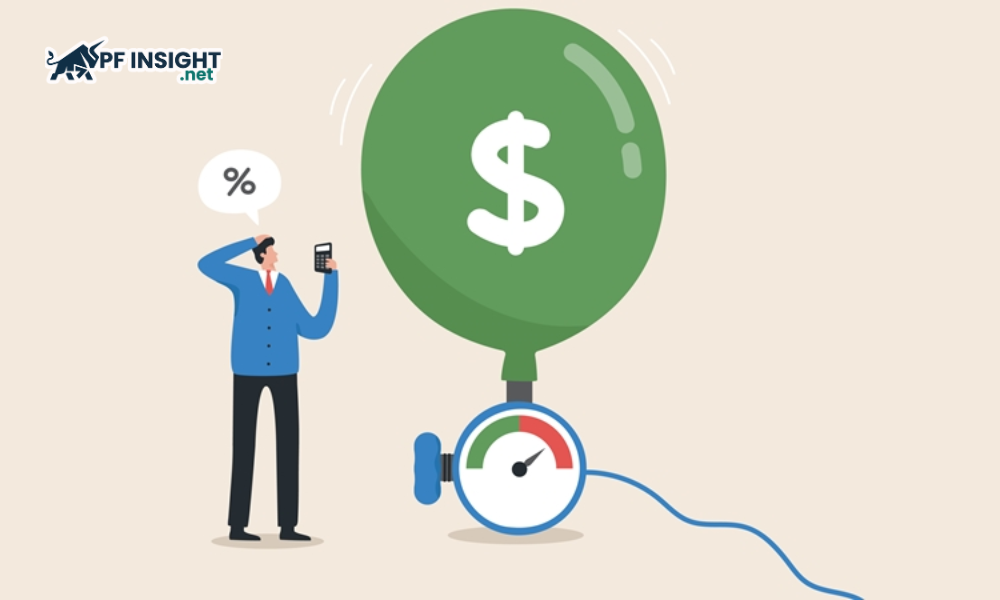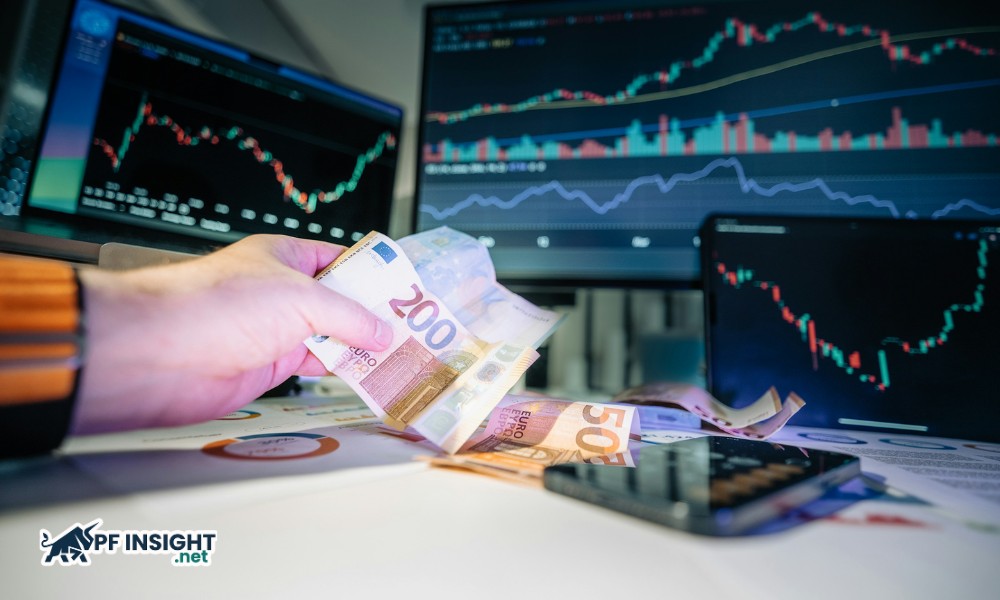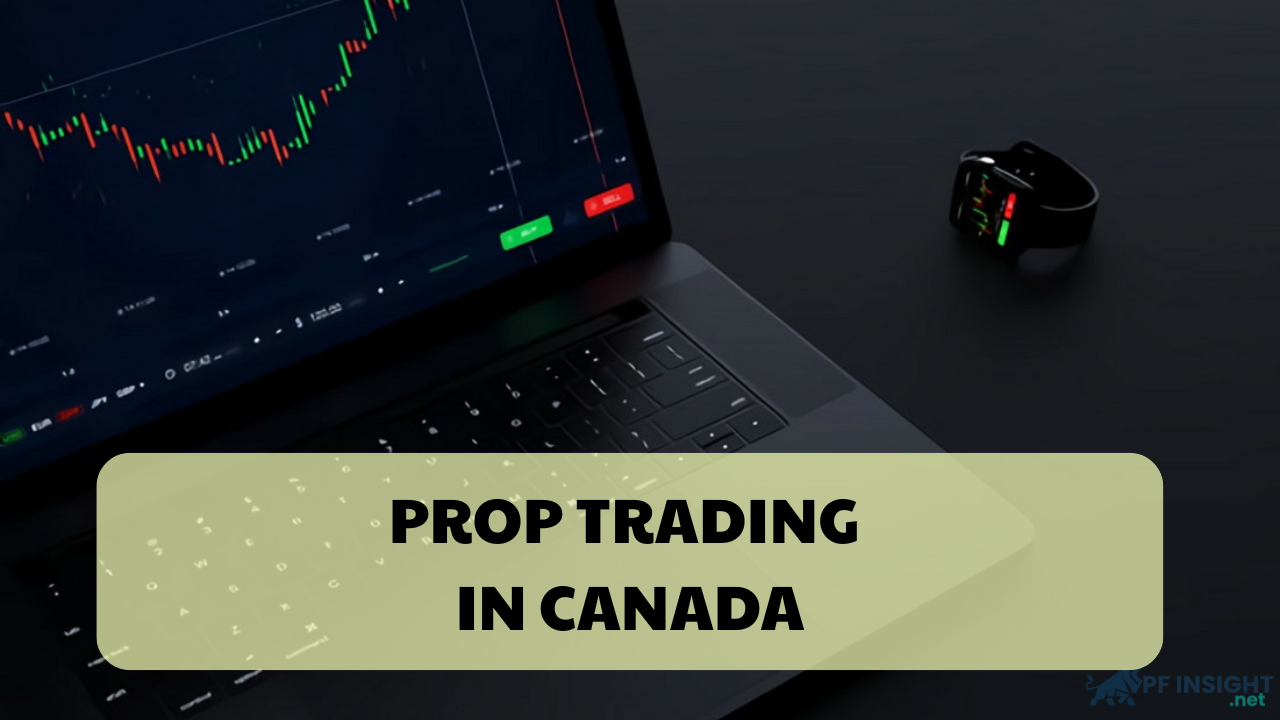In the modern financial market, proprietary trading firms offer traders the opportunity to develop their skills and increase profits without the need for their own capital. However, for long-term effectiveness, mastering prop firm profit analytics is a key factor in accurately evaluating performance and optimizing trading strategies. In this article, PF Insight will guide you on how to analyze profits and build a solid trading foundation.
- What is Prop Firm tax? Tips funded traders use to keep more profits
- Top 10 prop trading in Canada for Forex, stocks and crypto traders
- Why is affiliate compliance important? Everything you need to know
What is profit analytics?
Profit analytics is a method of in-depth assessment of trading performance through the synthesis, processing and visualization of traders’ profit data. In a proprietary trading environment, this tool not only measures the final profit results but also analyzes in detail factors such as risk ratio, market behavior, performance by each strategy and order entry time to help traders optimize trading efficiency and manage capital more intelligently.
Simply put, prop firm profit analytics acts as a “compass” for both traders and proprietary trading firms, helping them rely on real-world data to optimize strategies, improve investment efficiency, and ensure the ability to maintain stable capital over time.
Why is profit analytics the foundation of trader success?

Prop firm profit analytics is important in the trading environment for both traders and proprietary trading firms. Here are the main reasons:
Helps traders understand their trading performance: Prop firm profit analytics helps traders identify profitable and unprofitable trades and find out what factors influence their results. This allows them to customize their strategies, improve their performance, and control their emotions. Being data-driven helps maintain discipline and optimize long-term profits.
- Effective risk management: Prop firm profit analytics tracks key metrics such as drawdown, risk-reward ratio, and win/loss ratio. This allows both traders and proprietary trading firms to proactively limit losses, effectively control risks, and ensure account stability during trading.
- Support for strategy and profit optimization: Through prop firm profit analytics data, traders can clearly identify the trading strategies that bring the highest performance. At the same time, prop firms use this information to distribute capital and prioritize support for high-potential traders, helping both parties achieve sustainable profit goals.
- Evaluating trader performance: Proprietary trading firms use profit analytics to accurately measure the performance of each trader, thereby considering the need to provide additional capital or expand the trading scale. At the same time, this data helps them build capital management mechanisms, transparent reward distribution and ensure fairness in the profit system.
- Building a long-term strategy: Through prop firm profit analytics, traders can build sustainable trading strategies. At the same time, companies take advantage of this information to optimize risk management, maintain stable operating performance and increase profits in the long term.
Key metrics in prop firm profit analytics
To accurately evaluate trading performance, prop firm profit analytics focuses on several key components. These metrics help both traders and proprietary trading firms track, manage risk, and optimize profits.

Profit sharing ratio
Profit sharing ratios play a key role in prop firm profit analytics. Depending on each company’s policy and trader performance, the split usually ranges from 70/30, 80/20, and can even reach 90/10 or 95/5 for excellent traders. While high payouts are often attractive, they don’t always mean traders are better off. Many high payout programs come with strict rules like minimum trade requirements, strict risk limits, or hidden fees. Therefore, traders should carefully evaluate the terms before joining.
Win rate and number of winning/losing orders
- Win rate: Percentage of profitable trades compared to total number of executed trades.
- Number of winning/losing orders: Helps evaluate the stability and effectiveness of the strategy.
Meaning: Even with a high win rate, if the risk per trade is too great, the strategy still needs to be carefully evaluated to ensure capital preservation.
Challenge entry fees and other additional charges
Typically, traders are required to pay a fee to participate in the evaluation program of proprietary trading companies, which can range from $50 to over $1,000 depending on the size of the funded account. In addition, there are other costs such as:
- Account recovery fee for rule violation
- Data or trading platform usage fees
- Currency conversion fee when withdrawing international profits.
In the process of prop firm profit analytics, traders need to consider all related costs, instead of just focusing on the overall profit. This helps to accurately determine the net profit, reflecting the trader’s actual financial performance.
Gross profit & Net profit
- Gross Profit: Total profit before deducting transaction costs, commissions or spread fees.
- Net Profit: Actual profit received after deducting all expenses.
Meaning: This tool helps traders determine the actual effectiveness of each trading strategy, and helps companies analyze and measure the overall profitability of the system as well as the performance of each trader in the portfolio.
Drawdown
Drawdown is the percentage that represents the greatest decrease of an account from its highest value to its lowest value in a particular period.
Meaning: Drawdown analysis helps determine the actual level of risk that the trader is facing. When the drawdown is too deep, it shows that the trading strategy is potentially high risk, which may cause the company to reconsider funding or revoke the trader’s trading rights.
Instructions on how to calculate net profit in prop firm trading

To better understand prop firm profit analytics, traders can consider the following real-life example in the proprietary trading field:
A trader makes a profit of $10,000 within a month from his portfolio. According to the agreement, the profit sharing ratio between the investor and the company is 70/30. In addition, the project management fee is $300, along with $200 for platform operations and legal procedures.
Note: There are no additional fees or penalties associated with this transaction.
The process of prop firm profit analytics is as follows:
- Step 1: Calculate the total amount divided for investors
-
- 10.000 USD x 70% = 7.000 USD
- Step 2: Subtract related expenses
-
- 7.000 USD – 300 USD – 200 USD = 6.500 USD
- Step 3: Profit received
-
- The actual profit the investor received was $6,500, which is 65% of the total profit.
This process allows both companies and traders to clearly identify the true profitability of transactions, thereby making more accurate decisions, optimizing investment performance and adjusting development strategies to suit the actual market situation.
The secret behind prop trading firms’ revenue model
Prop trading companies are increasingly attracting great attention from the trader community. However, to operate effectively, each prop firm builds its own revenue model to balance the interests of the company and traders. Mastering prop firm profit analytics is the key for traders to choose the right partner and succeed in trading.

Evaluation fee model
This is the most common form of revenue generation used by many proprietary trading firms today. Traders are required to pay a registration fee to participate in the qualification phase. This fee helps the company maintain a stable source of income while minimizing the risk of traders who do not meet the requirements during the challenge.
For example, a trader spends $200 to participate in the challenge with a $50,000 account. If they fail, the company will keep the entire fee. Conversely, if the trader passes the assessment, they are granted a real account and are entitled to share profits in subsequent trades.
For traders, this model is considered a form of “low risk – high opportunity”, because they only need to pay a relatively small fee to have the opportunity to access large trading capital from the exclusive trading company, instead of having to bear all the financial risks in the real market.
Profit split model
Once the trader has passed the assessment period and is granted a real account, any profits generated from trading will be split according to an agreed ratio, usually 80/20 or 90/10. The trader will receive the main profit, while the proprietary trading company retains a small portion to maintain the system, cover operating costs and fund development.
This is considered the most stable and long-term revenue model for prop firms, because it is based on the actual trading results of traders. Actual profits not only bring direct sales, but also demonstrate the company’s reputation, thereby attracting a potential trading community and expanding scale.
Win-win relationship between trader and prop firm
Unlike traditional brokerages – where profits mainly come from the volume of customers’ transactions, prop firms only truly make a profit when traders trade successfully. This relationship creates a close bond, because both sides are working towards the same goal: Stable profits and sustainable development.
Understanding prop firm profit analytics helps traders clearly understand the nature of contract terms, thereby avoiding unclear agreements. For example, a proprietary trading firm with low participation fees but high profit sharing ratio may not be suitable for experienced traders. Conversely, a high profit sharing model but high service fees also affect the trader’s net profit.
More importantly, when traders understand the mechanism of prop firm profit analytics, they can adjust their strategies accordingly, increase profit efficiency and control costs more reasonably. A professional trader not only knows how to trade well, but also has to understand the financial structure and operating rules of the model they are participating in.
How to optimize profit when trading at a prop firm
Prop firm profit analytics is not simply about executing many orders or achieving large profits in the short term. For professional traders, the core goal lies in evaluating actual performance, controlling risks scientifically and focusing on net profit – a measure that reflects long-term trading efficiency and the ability to maintain sustainable financial stability.

Understand the rules and mechanisms of prop firm
Each proprietary trading firm has its own rules regarding risk management, maximum loss limits, trading time, and profit sharing. Failure to read these terms carefully can lead to traders inadvertently violating the rules, leading to account revocation, even if they are achieving good trading results and stable profits.
For example, many proprietary trading firms set daily drawdown limits of just 5%, exceeding which will result in immediate account closure. Understanding and adhering to these regulations helps traders preserve capital and lay the foundation for sustainable profit growth over the long term.
Prioritize real profits instead of just looking at numbers on a chart
In trading, many traders often only pay attention to the profits shown on the chart and ignore the potential costs and risks, leading to an inaccurate assessment of the real performance. What prop firms really care about is net performance. This number represents the actual amount of money left after deducting all types of fees: Platform fees, challenge fees, management costs and small losses. Understanding net profit is the key to accurately evaluating performance.
For example, a trader may have a gross profit of $5,000 in a month. However, after deducting fees such as a $150 account fee, a $50 platform fee, and small losing trades, the actual net profit is only $3,800. This number accurately reflects the trader’s ability to create true value.
Prop firms do not only look at short-term profits to evaluate traders. They focus on the ability to maintain stability and control drawdown, that is, to protect capital during periods of high market volatility. A trader with steady, albeit slow, growth in profits is generally considered reliable and has a greater chance of being funded than one with high but inconsistent profits. This forms the core principle of prop firm profit analytics.
Apply strict risk management
Risk management is an important factor in prop firm profit analytics. Even with an effective strategy, exceeding the loss limit will lead to failure. Some principles for traders to remember:
- Each order should only risk a maximum of 1–2% of total capital.
- Always set a fixed stop loss that does not change when the market goes against you.Ensure Risk:Reward (R:R) ratio of at least 1:2 for profitable trading in the long term.
Practicing this discipline helps traders maintain a stable account, avoid large losses and thereby increase the possibility of achieving a higher profit sharing ratio in the following payment periods.
Record transactions to track and evaluate performance
An important tool to support traders inprop firm profit analytics is a trading journal. Not only does it simply record buying and selling orders, it is also a database that helps analyze trading habits, identify the strengths and weaknesses of strategies, thereby adjusting plans and improving trading performance sustainably over time.
A complete transaction log includes the following:
- Order opening and closing time
- Currency pair or trading asset
- Reason for entering the order (setup, technical signal, support/resistance zone)
- Trading results: Profit/loss, Risk:Reward ratio (R:R)
- Psychological notes when trading: Confidence, anxiety or being affected by FOMO
By regularly reviewing and analyzing your trading journal, you will be able to identify your own habits and tendencies. For example, you may find that you are more likely to lose money during the Asian session or that you have the highest win rate when using breakout strategies. Based on this data, you can focus on the timeframes and strategies that work, and eliminate the factors that reduce your performance, helping you to increase your profits consistently.
Additionally, many proprietary trading firms now offer profit analytics dashboards. Combined with personal trading journals, traders can comprehensively evaluate trading performance, including net profit over time, average drawdown, successful order rate, effective trading frequency, and capital efficiency, thereby optimizing strategies and better managing risks.
Keep your mind stable and disciplined
Profits only increase when the trader controls his emotions well. A good trader is not always winning, but knowing when to stop. Once the monthly profit target is reached, the trader should not try to open more orders, because exceeding the limit risk can lead to losing the entire account. This forms the rule of prop firm profit analytics. Building a scientific trading habit, including reviewing orders after each session, keeping a trading diary and maintaining reasonable rest time, helps traders stay focused, avoid stress and improve stable trading performance in the long term.
Conclude
In short, prop firms open up a golden opportunity to access large capital without risking personal money. However, to turn this opportunity into real success, traders need not only solid trading skills but also know prop firm profit analytics. This is the key to accurately evaluating performance and maintaining a sustainable career.







